KADENA AIR BASE, Japan —
In efforts to prepare and protect the Air Force’s most valuable resource of all — Airmen — survival, evasion, resistance and escape specialists undergo extensive training to make certain aircrew members are up to date with the latest on survival and evasion tactics. The tactics taught give Airmen skills to aid in their survival in worst-case scenarios.
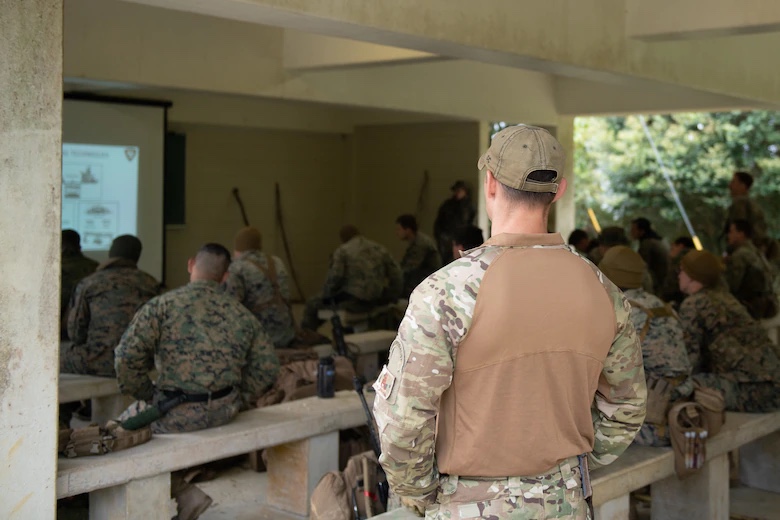
The SERE specialists have to be experts in their profession in order to teach tactics and procedures effectively. To accomplish this they must complete rigorous training at technical school and pass the certification phase that follows.
The process for becoming a SERE specialist begins with a three-week-selection course, followed by a six-month technical school, which includes a three-week survival crash course that pilots and aircrew take to become operational, explained Tech. Sgt. Casey Carter, 18th Operations Support Squadron NCO in charge of SERE training. Once they successfully complete their technical school, they then go through a 6-12 month certification phase.
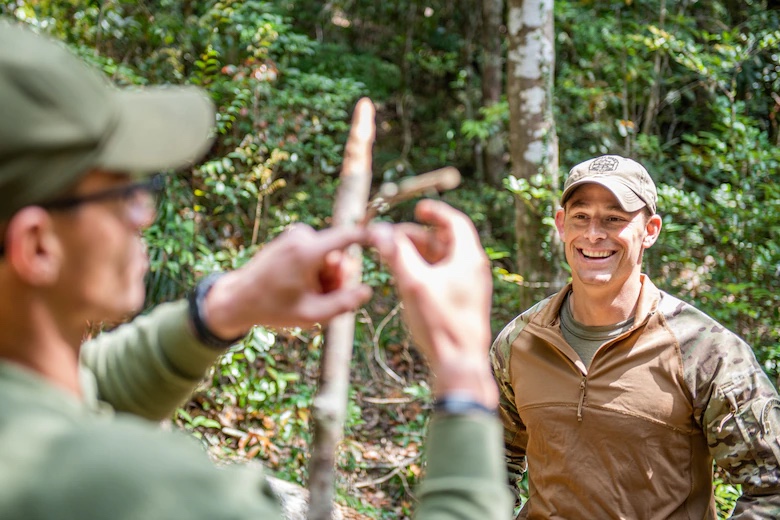
“When you’re certifying for those 6-12 months, you’re actually teaching aircrew and pilots that are coming through the schoolhouse and you have a trainer that’s evaluating you as an instructor,” Carter said. “Once certified, you’re on your own, and you get your own class of aircrew and pilots to take into the woods and instruct.”
Both Tech. Sgt. Kenji Scouton, 18th OSS NCO in charge of SERE operations, and Carter now lead the refresher courses on Kadena, recertifying pilots and aircrew members on the fundamentals of survival.
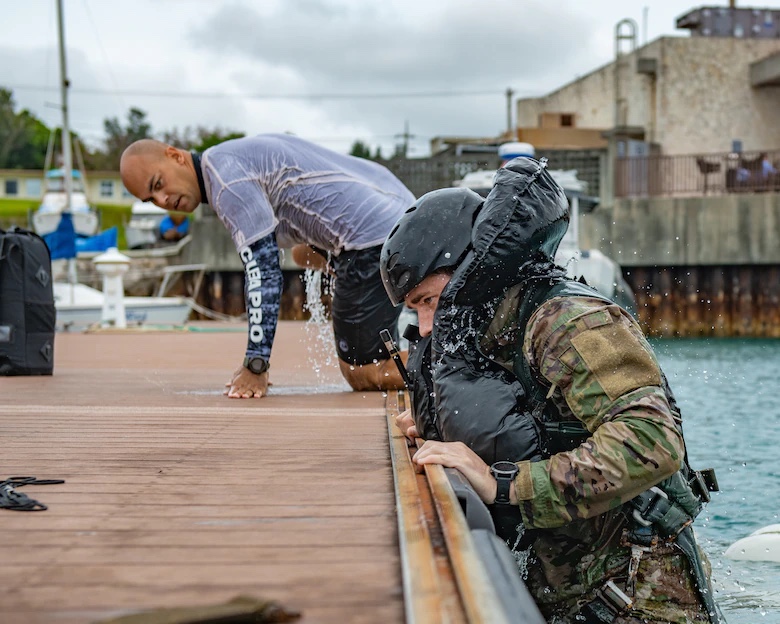
“It’s been interesting, I’ve seen some students I taught at the schoolhouse at Fairchild come through and get stationed out here,” Scouton said. “So I’ve had some guys be my students multiple times, whether it be in the initial course or the refresher courses.”
The refresher courses taught by SERE specialists include many classes such as combat survival training, conduct after capture training, water survival training and emergency parachute training. The training sessions typically begin with a few hours of lecture, followed by real-life application of the newly obtained knowledge.
The real-life applications vary for each lesson so preparation and execution can take hours. One of the more involved exercises, combat survival training, starts at sunset and goes until students are rescued, which can sometimes be as late as midnight.
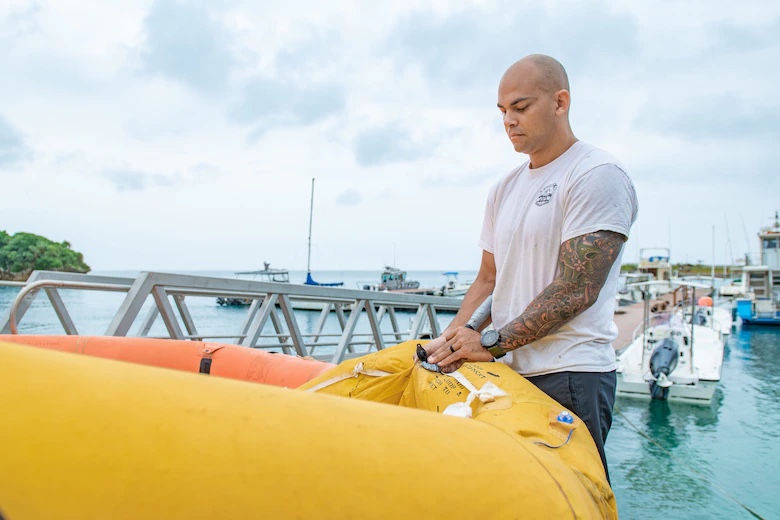
“We put students through an invasion and navigation scenario that culminates in their successful recovery at the end of it,” Scouton said. “With a two-man shop, we have to play many parts. We go from teaching the class to kicking off the survival scenario, then from trying to catch them to trying to recover them. We try to provide them with what could look like real-world information so if the real event does happen, so they would at least be familiar with the steps it would take to be successfully recovered.”
Many factors make Kadena’s SERE team’s courses unique. Not only do they have to take into account the island life environment, but they also have to contend with the variety of aircraft and missions based out of here. This means the local SERE specialists have to be well versed in the specific gear that accompanies each aircraft.
“With each one of the refresher training courses, we have to tailor training to particular aircraft and the equipment they have,” Scouton said. “Being that we have fighter ejection seat aircraft, heavy aircraft and rotary-wing aircraft, we have to carry a multitude of different equipment to make sure we are meeting the needs of each person.”
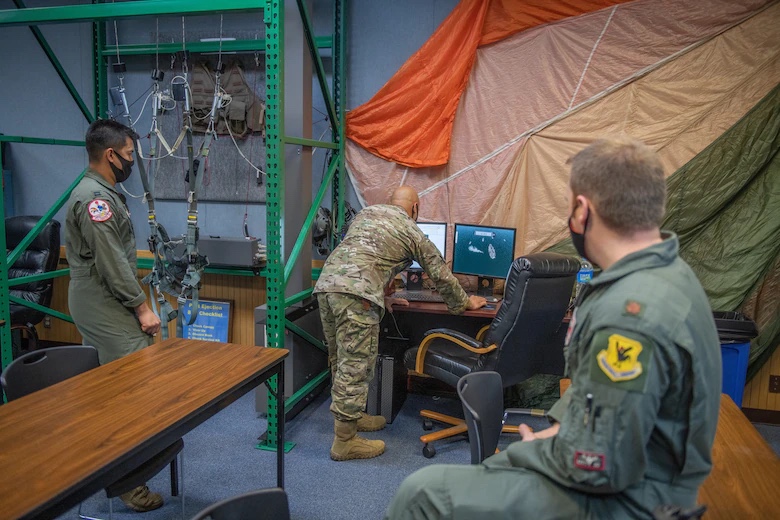
During deployments, the main mission for SERE is personnel recovery. This entails working with PR assets directly, getting in contact with isolated personnel, guiding them to recovery and finally reintegrating the recovered personnel into their regular day-to-day life.
“Reintegration takes place in three phases. Everyone goes through phase one. If they are psychologically and medically cleared, then they are fit to fight again.” Carter said. “Phase two and three go deeper, and require more rehabilitation and frequent visits with medical and psychological professionals.”
Although their schedules are usually packed with training and refresher courses, the SERE specialists find enjoyment with their roles on island.
“Some may perceive it as a difficulty, but since we have so many different types of aircraft and missions on Kadena, it gives us a good opportunity to actually teach all the available refresher trainings,” Scouton said. “It’s really provided us with a lot of opportunities that you wouldn’t be able to get elsewhere.”
By A1C Cesar J. Navarro, 18th Wing Public Affairs


I wasn’t expecting the word inexpected.
No one expects the Spanish Inquisition
I’ve got to admit, that was well played!
“One of the more involved exercises, combat survival training, starts at sunset and goes until students are rescued, which can sometimes be as late as midnight.”
God bless the Air Force. Missing happy hour is truly the definition of service before self!
(USAF vet here… and yeah, I picked the right branch!)